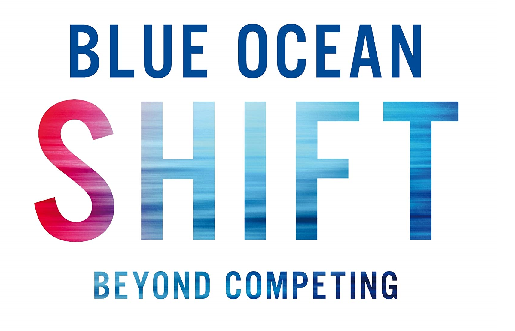Blue Ocean Shift Tools
In my previous post on Blue Ocean Shift: Beyond Competing, I shared the differences between blue and red oceans and the four principles of blue ocean strategy. In this post, I outline blue ocean elements and tools.
The earlier post mentioned humanness. Humanness has three elements:
- Atomization: Allowing people to know something is achievable by making larger, daunting tasks attainable by breaking them into smaller pieces.
- First-hand discovery: Every team member thinks in new ways and experiences.
- Fair process: This is achieved through engagement, explanation, and clear expectations. Engagement gets stakeholders in the decision-making process. Explanation means sharing a deep dive on why the group is passing on some ideas. Clear expectations mean what it sounds like; everyone understands what’s expected and the objective measure of success.
Five tools implement a blue ocean shift:
- Pioneer-migrator-settler map: This tool assesses how an organization’s offering fits in the overall market. It breaks customers into three groups: pioneers—customers who love your product, settlers—customers who view your product about the same as your competitors, migrators—customers in the middle. Draw a rectangle with three sections. On the bottom, list your settlers. In the middle, list migrators. At the top, list the pioneers. Next, draw circles that represent the revenue each offering generates. Bigger circle = more revenue. Where is the bulk of your business? How can you make pioneers larger and flip migrators to pioneers?
- Strategy canvas: The strategy canvas rates your offering against your top competitor. To create a strategy canvas, put the top ten to 12 competitive factors on the x-axis. On the y axis, make a scale of one (bad) to five (best). Take one of your offerings and rate each for each factor. Draw a line through your and your competitor’s data points. How do you stack up? Do the curves roughly match? If so, it’s a red ocean. If you’re consistently below, they have the better offering.
- Buyer utility map: This is a six-by-six table. Label the columns purchase, delivery, use, supplements, maintenance, and disposal. These columns represent the buyer’s life cycle. Label the rows customer productivity, simplicity, convenience, risk reduction, fun/image, and environmental friendliness. Answer questions like: What’s the convenience of purchasing your product? Where are there opportunities for innovation? What are areas that are pain points? How environmentally friendly is it for a customer to dispose of your product?
- Six paths framework: This tool generates ideas. The first path questions why a buyer chooses one option over another. For example, why do some investors use a self-service website instead of using a financial planner? The second path looks at your specific industry. For example, why does a buyer choose one offering over another? Is it cost, convenience, or something else? Path three evaluates the chain of buyers. Who is involved with the buying decision? Is it the ultimate end user? Who are the ignored people in the buying process that you could target? Path five asks how this purchase fits in the big picture. Is this a stand-alone purchase or part of something bigger? Path five encourages comparing emotion and functionality as it relates to the buying process and production. Path six looks at things outside your control that could impact your organization (think weather for a farmer).
- The six paths framework identifies opportunities. The authors give us a final tool with the four actions framework to break them down into activities.
- The four actions framework looks for opportunities. What is something taken for granted to eliminate? The book shares a hotel chain called CitizenM, where they got rid of the front desk and replaced it with a self-serve kiosk. What is something to reduce? Back to the hotel example, they reduced the room size realizing most travelers don’t hang out in their room. Where can industry standards be raised? At CitizenM, this meant soundproof walls and high-quality beds. Where are there opportunities to create? At CitizenM, ambassadors replace front-desk workers and are available throughout the hotel to help guests, and because all rooms are the same, they used prefabricated rooms.
The last step shared by the authors is a blue ocean fair. Invite top leaders to the fair. At the fair, start with a recap of your current red ocean. Share why a shift makes sense. Next, come presentations on new blue oceans. Each blue ocean idea should have a tagline. Each presentation should include a strategy canvas and the four actions framework.
When presentations finish, it’s time for the fair. A station represents each blue ocean idea. Stations have posters or product prototypes. Blue ocean working group members can be at their respective stations. The fair concludes with top leaders voting on the ultimate idea.
Blue ocean away!
Estimated reading time: 4 minutes
